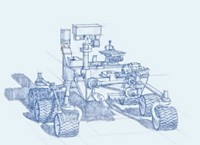Advertisement
Grab your lab coat. Let's get started
Welcome!
Welcome!
Create an account below to get 6 C&EN articles per month, receive newsletters and more - all free.
It seems this is your first time logging in online. Please enter the following information to continue.
As an ACS member you automatically get access to this site. All we need is few more details to create your reading experience.
Not you? Sign in with a different account.
Not you? Sign in with a different account.
ERROR 1
ERROR 1
ERROR 2
ERROR 2
ERROR 2
ERROR 2
ERROR 2
Password and Confirm password must match.
If you have an ACS member number, please enter it here so we can link this account to your membership. (optional)
ERROR 2
ACS values your privacy. By submitting your information, you are gaining access to C&EN and subscribing to our weekly newsletter. We use the information you provide to make your reading experience better, and we will never sell your data to third party members.
Physical Chemistry
Newscripts
Buckle up. This week’s Newscripts stories are out of this world.
by Alex Scott
November 20, 2017
| A version of this story appeared in
Volume 95, Issue 46
Asteroids unearthed

The idea of mining asteroids has been here for our past few swings around the sun, but it’s a concept circulated by joke-telling astrophysicists and deluded mine owners, right? Err, wrong. This time plenty of scientists are taking the idea seriously. Asteroid Science Intersections with In-Space Mine Engineering (ASIME), a scientific workshop for scientists and engineers, recently published a road map for making asteroid mining a reality.
Initially, asteroid mining will likely be small scale and support space missions only when astronauts need a propellant, building material, or other chemical for life support, the ASIME scientists say. The first material to be mined will likely be ice.
But digging up minerals and selling them back on planet Earth is the long game and a potentially lucrative one to boot. A 30-meter-diameter platinum-rich deposit on an asteroid could be worth about $50 billion, says Accenture analyst Rishika Daryanani in a recent report. The availability of such valuable material should leave any mining space mission worth its salt with plenty of room to make a profit.
“Yes, it is science fiction, but one day it will be scientific fact,” says J. L. Galache, chief technology officer for asteroid technology firm Aten Engineering, in a nod to the number of times he’s been asked if what his company does is for real.
Step one for ASIME’s scientists involves mapping the more than 17,000 near-Earth asteroids with orbits similar to our blue planet’s.
It would take a fleet of tiny spacecraft weighing just 50 kg each a little over three years to visit at least 300 of the asteroids and provide images and spectroscopic data on their composition and size, according to Pekka Janhunen, an astrophysicist with the Finnish Meteorological Institute. Using tiny spaceships would minimize the cost of the mission to about $70 million, Janhunen says.
Once an asteroid with a target material has been identified, then the miners can dig in. Asteroid mining techniques will need to adapt to a low-gravity environment. “Possible solutions include canceling out action-reaction forces by digging in opposite directions at the same time, or by producing a reaction force, such as by strapping a net around the asteroid for robots to grab onto while they dig,” Galache says.
Owning an asteroid is not currently an option for earthlings, but with so much profit at stake, asteroid mining rights will probably be required. “We don’t want two or three mining companies going to one asteroid and they have a fight or something,” Galache points out.
Living on Mars

Tapping asteroids for ice and using its hydrogen to make fuel could help power spacecraft to planets such as Mars. Once the astronauts arrive on Mars and decide they want to live there (although the Newscripts gang has seen “Total Recall” and “The Martian” and honestly doesn’t understand why they would want to), the best place to set up home would be in old lava tubes, according to researchers from the Universities of Padova and Bologna.
Researcher Riccardo Pozzobon of the University of Padova says a network of tubes may exist just meters below the surface of Mars that could provide protected habitats large enough for houses and streets. Lava tubes in Australia and the Canary Islands can be 30 meters across. “In the lower gravity environment of Mars, we see evidence for lava tubes that are 250 meters in width,” Pozzobon says.
So humans, who once lived in caves, may deploy some of their most sophisticated technologies to travel to another planet and … live in caves.
Alex Scott wrote this week’s column. Please send comments and suggestions to newscripts@acs.org.
CORRECTION: This article was updated on Nov. 29, 2017, to correct the statement that there are 11,000 near-Earth asteroids with orbits similar to Earth’s. There are more than 17,000 near-Earth asteroids.




Join the conversation
Contact the reporter
Submit a Letter to the Editor for publication
Engage with us on Twitter